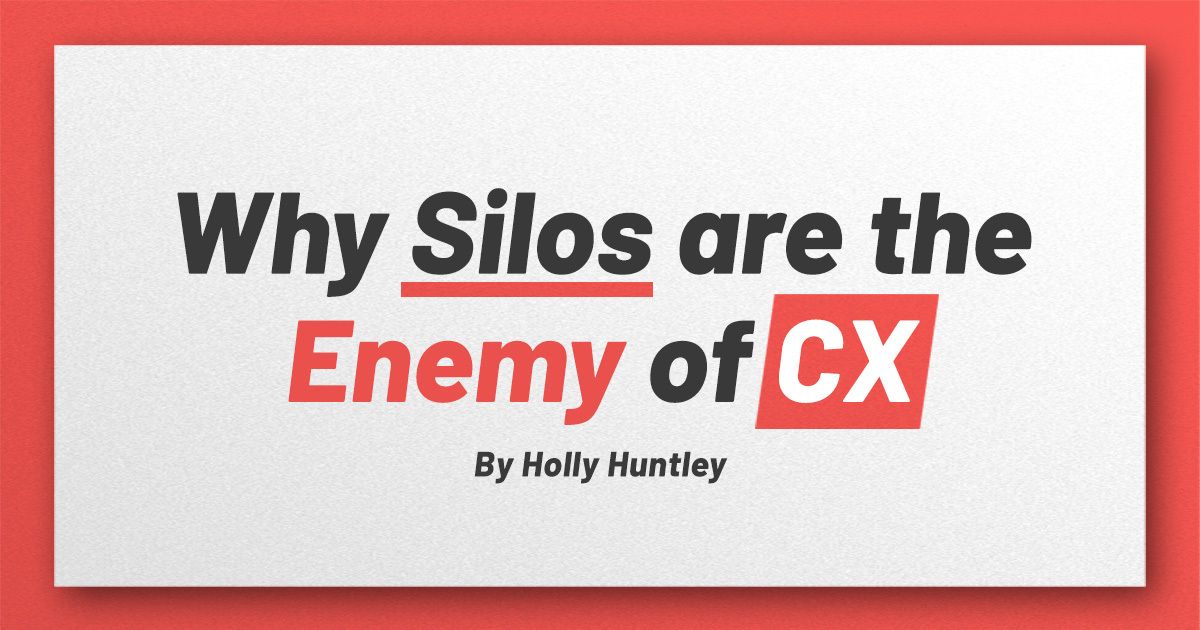We're now living in the experience economy, where a customer's memorable experience becomes the product. But if experience = the product, then what creates the experience?
We're now living in the "experience economy," where a customer's memorable experience becomes the product. But if experience = the product, then what creates the experience?
Every customer touchpoint contributes to the customer experience (CX). As such, no one function in your organization owns CX. But if your operations, sales, marketing, IT, human resources, and finance departments operate in silos—organizational functions that operate independently and can't or won't share information—it will certainly impact your ability to continuously improve your CX. Here's how:
- Technology decisions are made in a vacuum without consideration given to your brand.
- Marketing and sales are not aligned and have separate performance goals.
- Recruitment and marketing processes are not connected.
When I work on consulting projects, I ask the following questions to determine how ingrained silos are in the organization's culture:
- Do all areas have a shared purpose and shared goals?
- How is customer information shared across departments?
- Which departments have access to customer data?
- Is the leadership team truly aligned and collaborative, or just cooperative?
Siloed organizations suffer from a lack of trust, communication, collaboration, and efficiency—and this dysfunction all gets passed on to the customer. To benefit from the experience economy, organizations must break down silos in and shift from:
- Customer service to customer experience. Customer service is often viewed as a department or a single function that's focused on a specific transaction. CX is much broader and includes every aspect of an organization's offerings.
- Customer satisfaction to customer centricity. Customer satisfaction is just one measure of success. Customer centricity puts customers at the center of the product offering, brand positioning, and messaging.
- IT mandates to data informed decisions. Technology, data, and user experience (UX) are critically important and powerful CX enablers when they're used with the end goal of benefitting your customers.
- Functional silos to agile teams. Because value flows horizontally across functions, agile teams—cross-functional groups united around a common purpose—create the most value.
Better customer experiences are born at the intersection of technology, branding, and employee engagement. Likewise, poor CX happens when these connections break down. Technology delivered without the brand promise can leave your audiences feeling ambivalent. One disengaged employee can jeopardize optimal experiences for many customers. And just one bad customer experience can break a brand's reputation.
As they say at the Disney Institute, "while no one owns the Guest, someone, in every case, owns the moment." A holistic approach to CX that integrates all the moments across all functions creates great CX.
Want to improve your CX? Contact LMD.

